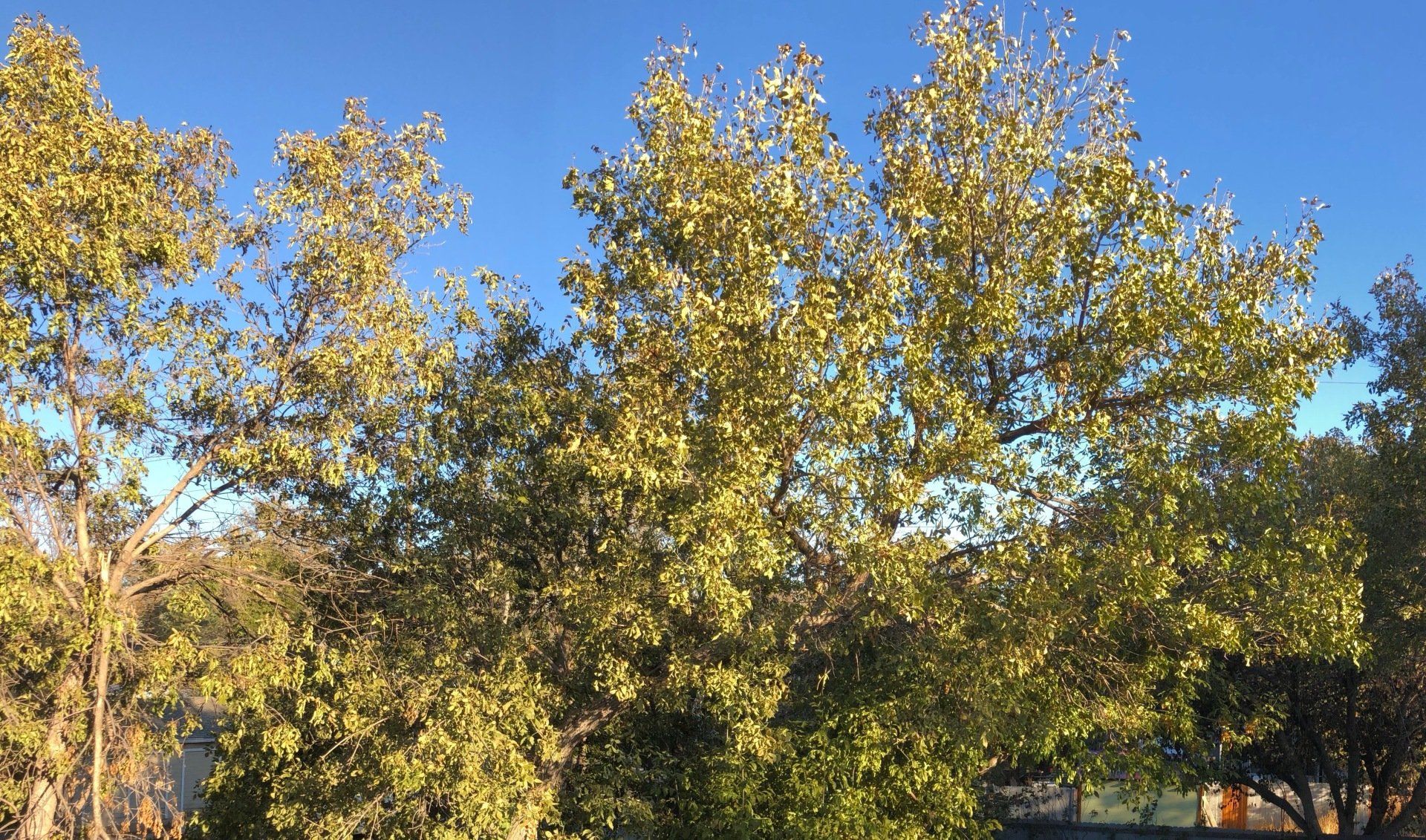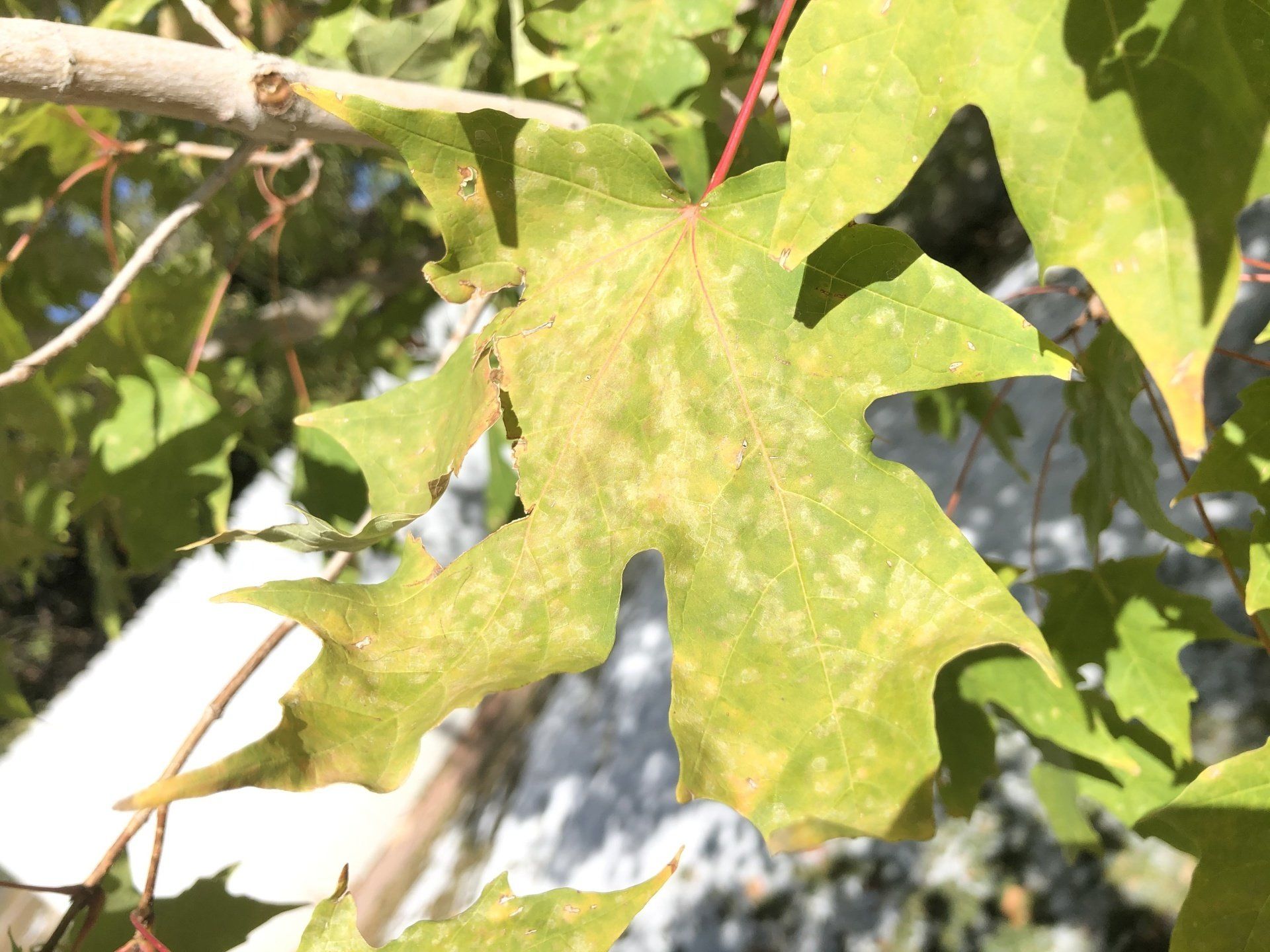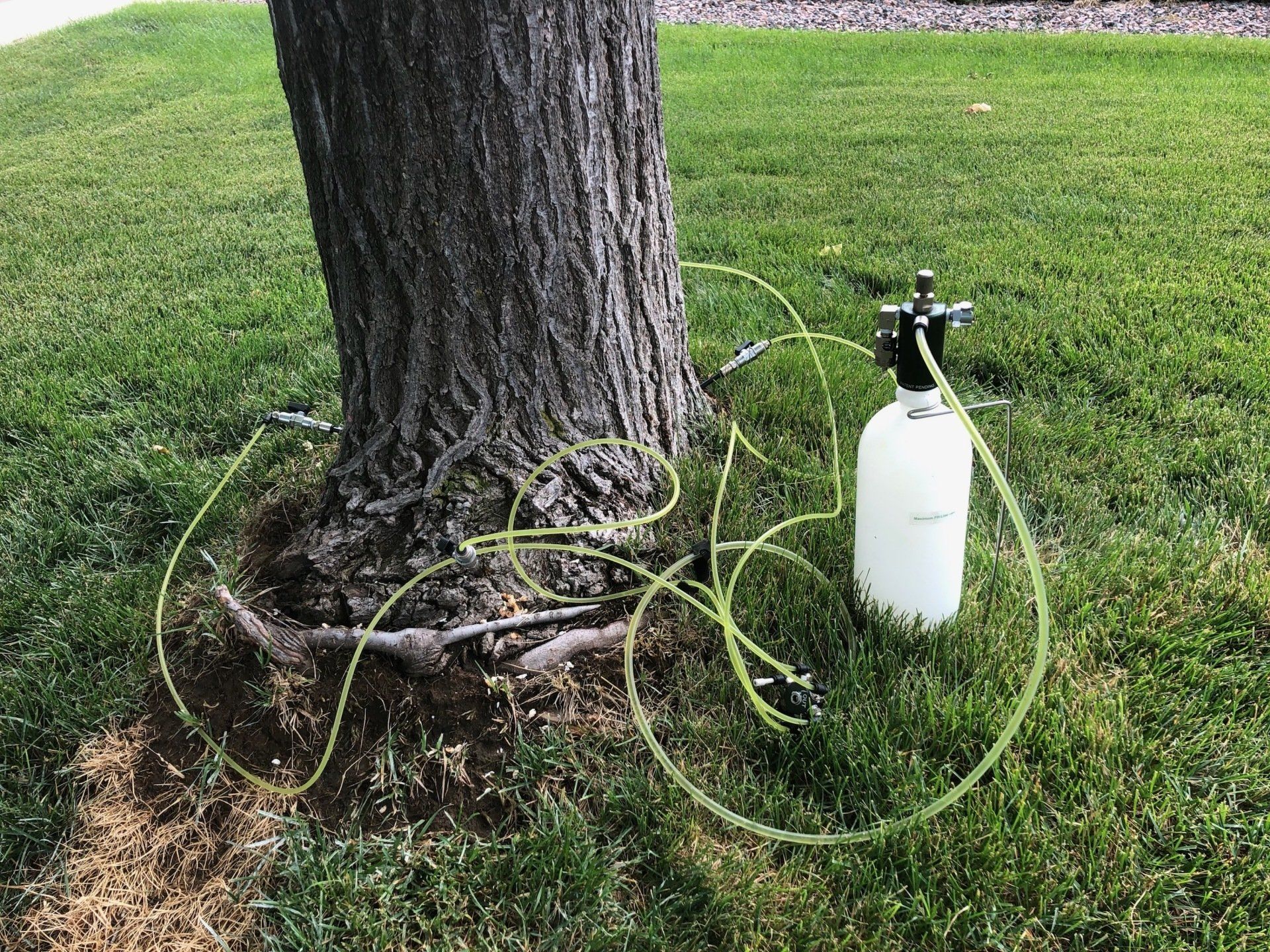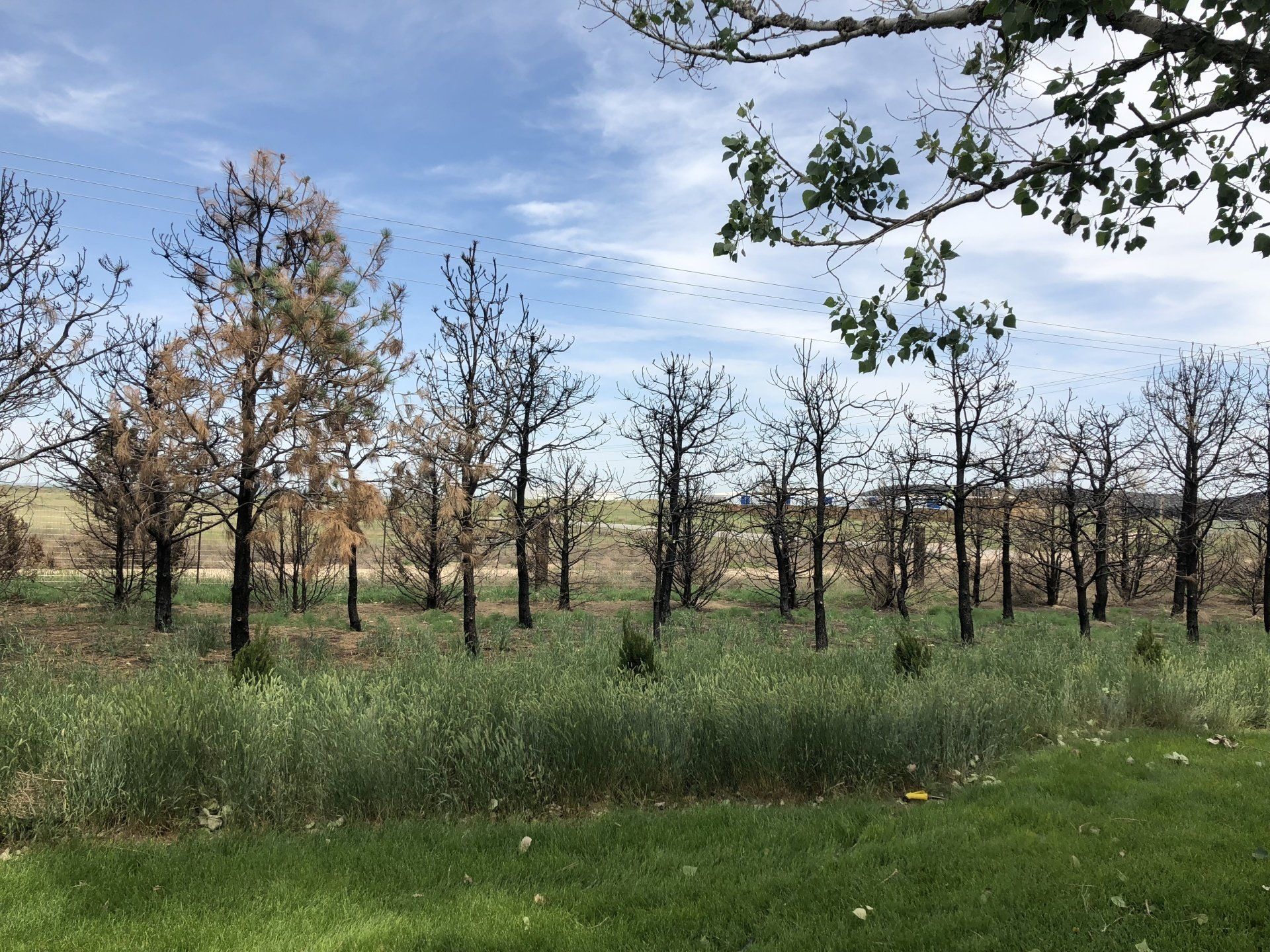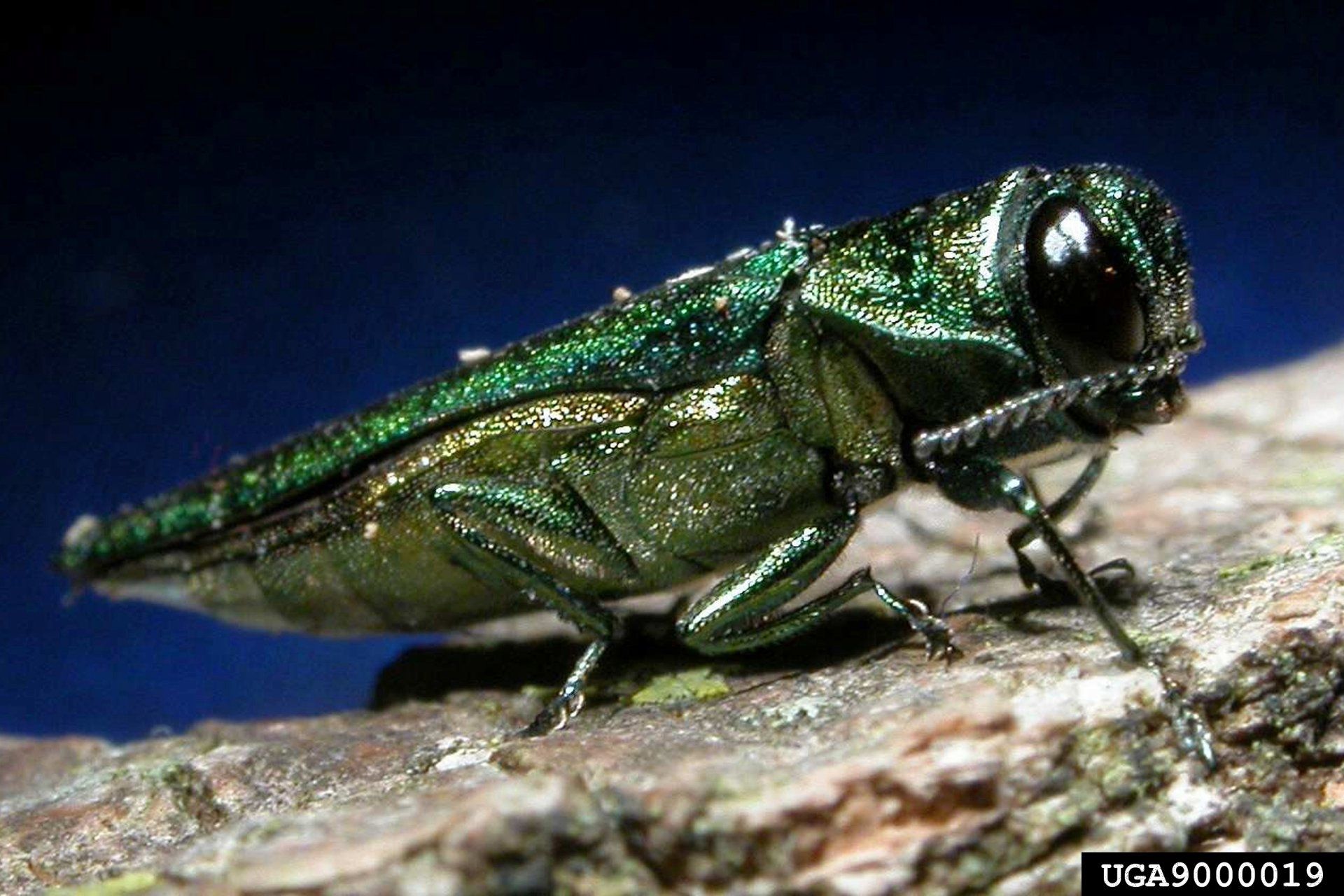What just happened to my trees?
What just happened to my trees?
All the leaves just wilted and fell off! Will it survive?
All the leaves just wilted and fell off! Will it survive?
Last week we had a massive temperature swing that took our trees by surprise and caused serious damage to the foliage to almost all of the trees in the Boulder area. In Boulder on October 9th it was 82° at 3pm and by 7 am the next day it had dropped to 21° . This change was enough to cause ice crystals to form in the cells which burst cell walls. When everything warmed back up the ice crystals melted and with perforated cell walls the water escaped and leaves began to wilt. This can cause damage to branches and entire trees as well but hopefully the low temperatures were not sustained long enough to not cause cells in stems and branches to do the same.
Trees have the ability to withstand massive changes in temperature but only if they have fully prepared or hardened off. Hardening off is the process by which trees change their chemistry within their cells to withstand lower temperatures. Trees do not have an internal clock so the only way they know how to start this change is by responding to the gradual seasonal temperature changes.
As temperatures start to drop trees do two main things to prepare for the changes. The main thing that prevents cell damage is the trees will break down long complex starch molecules into simple sugars. These sugars are much more water soluble and like salt in water it lowers the freezing point of the solution. This is very similar to how antifreeze in your car prevents the coolant from freezing in low temperatures. The other process trees use to prepare is by changing the properties of their cell walls to make sure they remain pliable even when temperatures fall. The trees replace the saturated fats (think butter) in their cell walls with unsaturated fats (think vegetable oil) which allows the cell walls to stay pliable and still function despite the lower temperatures.
So will the trees experience long term damage?
Most trees shouldn't have issues with leafing back out next year. Most of the trees I have inspected after this frost have already formed their buds. These buds are what will become the new leaves next spring and are much more cold hardy than the thin broad leaves. Sudden drops in temperature can cause damage to twigs and entire stems of trees but is much less common. The stems and branches have more thermal mass and this slows any temperature changes. We did have a frost about five years ago that caused tip dieback in many trees. This was a similarly large temperature swing in November a few years ago and the cells in these small twigs burst in the cold which caused some minor dieback on many trees. The same frost killed many non native plum trees and fruiting cherry trees in the Boulder area.
Is there anything that can be done?
As of now there is not much that can be done for the trees. Deep watering of trees and fertilizing in fall are generally not recommended. Fertilization and deep watering makes trees try to extend their growing season and delays their preparation for cold temperatures. The only other things we can do is deep water trees in the winter and help them to avoid desiccation of their remaining buds. Deep watering ensures that branches and buds don't dry out and die over the winter and will ensure trees can still leaf out in the spring.
Stay tuned for more local tree care tips and our article on winter watering and why it is so important!
Like us on Facebook to stay updated when we post more helpful tips.

